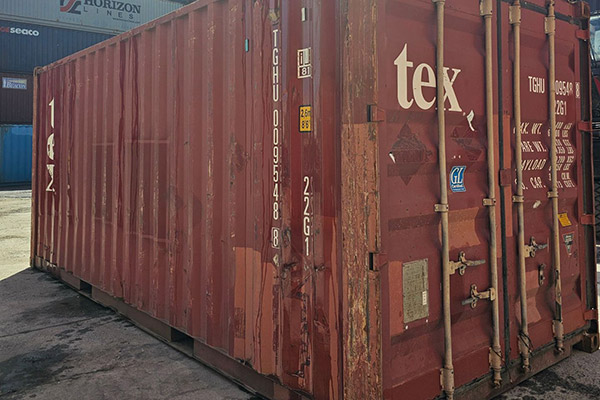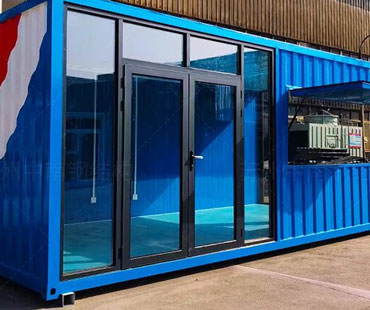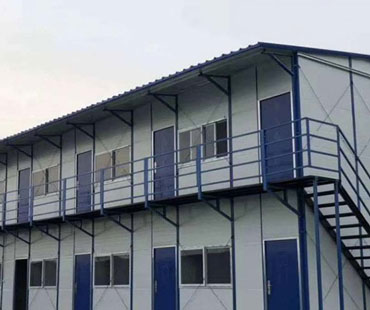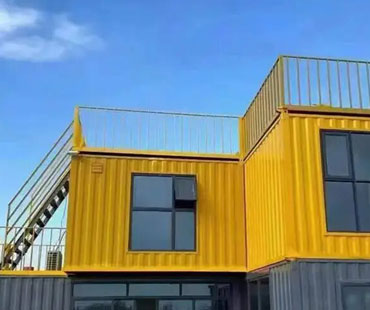In the world of international logistics, not all cargo fits neatly into a standard shipping container. Industrial equipment, construction machinery, wind turbine blades, steel pipes, and heavy vehicles often exceed the height or width limits of conventional containers. For such shipments, theflat rack container stands as the ideal solution — a versatile and robust design that enables the safe, efficient, and cost-effective transport of oversized and heavy loads across global routes.
This article explores the structure, features, advantages, and applications of flat rack containers, and explains why they have become indispensable to modern project logistics and heavy cargo transportation.
1. What Is a Flat Rack Container?
Aflat rack container is a specialized type of intermodal shipping container designed to carry heavy, wide, or tall cargo that cannot fit into a standard dry container. Unlike regular containers, a flat rack features:
Asolid steel floor with reinforced cross-members.
Two end walls (either fixed or collapsible).
No side walls or roof, leaving the cargo exposed.
This open design provides unmatched flexibility, allowing goods to extend beyond the container’s frame when necessary. Flat racks come in standard ISO dimensions — most commonly20 feet and40 feet in length — making them compatible with standard ships, trucks, and rail systems used in global logistics.
2. Key Structural Features and Types
Flat rack containers are available in two main configurations:
(1) Fixed End Flat Rack
This version has permanently welded end walls that provide strong structural support for extremely heavy or tall cargo. It’s ideal for long-term shipping of industrial machinery, steel coils, or vehicles.
(2) Collapsible Flat Rack
A collapsible flat rack features foldable end walls that can be flattened when not in use, saving space during storage or return transport (backhaul). When folded, several units can be stacked together, improving logistics efficiency.
Standard specifications include:
Length: 20 ft or 40 ft
Width: ~2.44 m
Payload capacity: up to40,000–50,000 kg, depending on model
Material: High-tensile steel frame and marine-grade timber or steel flooring
These containers are engineered to handle heavy dynamic loads while withstanding harsh marine environments.
3. Advantages of Using Flat Rack Containers
① Versatility for Irregular Cargo
Flat rack containers accommodate items that exceed standard dimensions in height, width, or weight — from excavators to prefabricated building panels. Cargo can be loaded from thetop, side, or front, offering flexibility unmatched by other container types.
② High Load-Bearing Capacity
The reinforced steel structure and robust flooring enable the transport of extremely heavy goods without risk of deformation. Some 40-foot flat racks can carryup to 45 metric tons, making them essential for heavy industries.
③ Easy Loading and Unloading
Since there are no side walls, cranes and forklifts can easily access the cargo from multiple directions. This is especially beneficial in ports, factories, or construction sites where maneuvering space is limited.
④ Intermodal Compatibility
Flat rack containers comply withISO standards, meaning they can seamlessly move betweenships, trucks, and trains without repacking. This reduces handling time and the risk of cargo damage.
⑤ Stackable and Space-Saving
Collapsible models can be folded and stacked together when empty, minimizing storage space and return transportation costs.

4. Common Applications of Flat Rack Containers
Flat racks play a crucial role inproject logistics,industrial manufacturing, andconstruction. Typical applications include:
Construction Equipment: Bulldozers, excavators, and cranes.
Vehicles: Buses, trucks, boats, and heavy-duty trailers.
Industrial Machinery: Generators, turbines, compressors, and drilling rigs.
Steel & Metal Products: Beams, pipes, plates, and prefabricated frames.
Energy Projects: Wind turbine blades, solar modules, and power transformers.
In recent years, flat racks have become increasingly important inrenewable energy transport, where components are oversized but must arrive undamaged at remote project sites.
5. Loading, Securing, and Safety Considerations
Handling oversized cargo comes with specific safety challenges. Proper loading and securing techniques are essential to prevent movement or tipping during transit.
Lashing and Securing: Heavy-duty chains, tension belts, and turnbuckles are used to secure cargo to the flat rack’s corner castings and lashing rings.
Weight Distribution: Evenly distribute the load to prevent imbalance or excessive pressure on the floor.
Protection from Weather: Since flat racks are open, cargo may require tarpaulin covers, shrink wrap, or custom-made crates for protection against rain and seawater.
Compliance: Follow theInternational Maritime Organization (IMO) guidelines andCTU (Cargo Transport Unit) Code to ensure safe stowage.
Professional logistics companies often providecustom load plans and engineering calculations for extremely large or heavy shipments.
6. Recent Innovations and 2025 Trends
In 2025, the flat rack container industry is embracing new technologies to enhance safety, efficiency, and sustainability.
Lightweight Steel Alloys: New high-tensile materials reduce the container’s weight while maintaining load capacity.
IoT Tracking Systems: GPS and sensor-based monitoring allow real-time visibility of cargo location, vibration, and impact conditions.
Modular Design: Some manufacturers now produce adjustable flat racks that can expand or retract to fit different cargo dimensions.
Corrosion-Resistant Coatings: Advanced anti-rust coatings extend service life, especially for marine shipping routes.
Green Logistics Focus: Recyclable materials and improved manufacturing efficiency align with environmental regulations and carbon reduction goals.
These advancements ensure that flat rack containers remain a cornerstone of heavy cargo logistics in the years ahead.
7. Choosing the Right Flat Rack Container
When selecting a flat rack container, companies should consider several key factors:
1.Cargo Weight & Dimensions – Ensure the container’s payload rating exceeds the cargo’s gross weight.
2.End Wall Type – Fixed ends for structural stability; collapsible ends for flexibility and storage.
3.Transportation Mode – Sea, rail, or road may have different securing requirements.
4.Rental vs. Purchase – Frequent users may opt for ownership; occasional shippers can save by renting.
5.Regulatory Compliance – Verify ISO certification and CSC (Container Safety Convention) approval.
Working with areliable logistics provider that specializes in out-of-gauge (OOG) cargo ensures safe and compliant transport from origin to destination.
Flat rack containers represent the perfect blend ofengineering strength and logistical flexibility. Their ability to handle heavy, wide, or irregular cargo makes them indispensable in modern global trade — particularly in industries such as construction, energy, and manufacturing.
As supply chains evolve and projects become more complex,flat rack containers will continue to define the standard for oversized cargo transport, combining durability, efficiency, and adaptability. Whether shipping a massive turbine or an industrial generator halfway around the world, the flat rack container remains — and will continue to be — theultimate solution for oversized and heavy cargo transportation.


